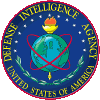
NATIONAL GOALS
CONTENTS
North Korea: The Foundations for Military Strength -- Update 1995
December 1995
Chapter 2
Increasing Internal Pressures
North Korea's socialized command economy remains
basically unchanged in structure and emphasis.
Agriculture is still labor intensive, and heavy industry,
including arms production, is emphasized at the
expense of consumer goods. Never a very prosperous
country, North Korea's shortages of fuels and electric
power have increased between 1991 and 1995,
especially in the civil sector. A negative spiral of
shortages has led to idle factories, fewer exportable
items, and less hard currency to buy food, fuels, and
other critical items. North Korea's petroleum
deliveries subsequently have declined by over 50
percent from the peak consumption years of the late
1980s. During 1995, North Korean factories
reportedly operated at less than 50 percent of capacity.
The 1994 estimated gross national product was
between $20 billion and $21 billion, amounting to a
relatively high per capital income of $925.
Foreign trade plays an important role in North Korea's
economy despite Pyongyang's avowed philosophy of
staunch self-reliance. North Korea relies heavily on
imports for several critical needs, such as crude oil,
coking coal, and food. Pyongyang is placing a higher
priority on earning foreign currency to purchase
needed imports. North Korea's principal exports
remain military weapons, minerals, chemicals, and
metallurgical products.
Producing and Exporting Arms. Whether bartered for oil or earning hard currency, these exports are a significant portion of the economy.
Pyongyang realizes that it must tap world markets to
satisfy critical economic needs. However, this will entail
revamping North Korea's industries and giving greater attention to quality of goods, financial responsibilities,
and product warranties so that exports can attract
foreign exchange. North Korean leaders appear to fear
that substantial foreign assistance, while alleviating
some economic ills, could undermine the government.
Hence, the new Najin-Sonbong Free Trade area is
constructed as a high-security area.
Until 1990, half of North Korea's trade had been
conducted with the Soviet Union, China, and Eastern
Europe. With the breakup of the communist world and
the new emphasis on market economics, Pyongyang's
foreign trade in 1994 plummeted to its lowest level
since 1978. Exports to China, Pyongyang's main
trading partner, fell along with North Korean imports
of Chinese goods. Exports to Japan, on the other hand,
increased 20 percent while imports fell 18 percent.
Inter-Korean trade has steadily increased since 1988
despite frigid political relations. Indirect trade
accounts for over 95 percent of the volume and is
difficult to quantify.
Worsening Food Situation
CONTENTS



